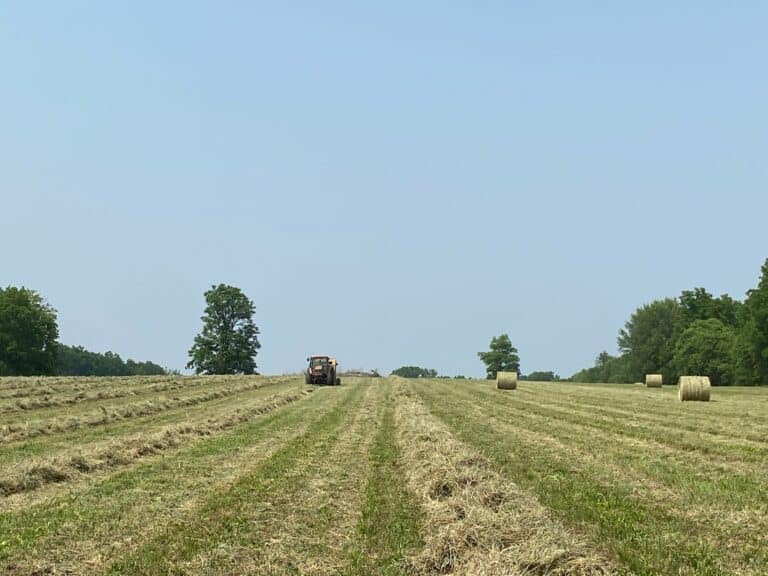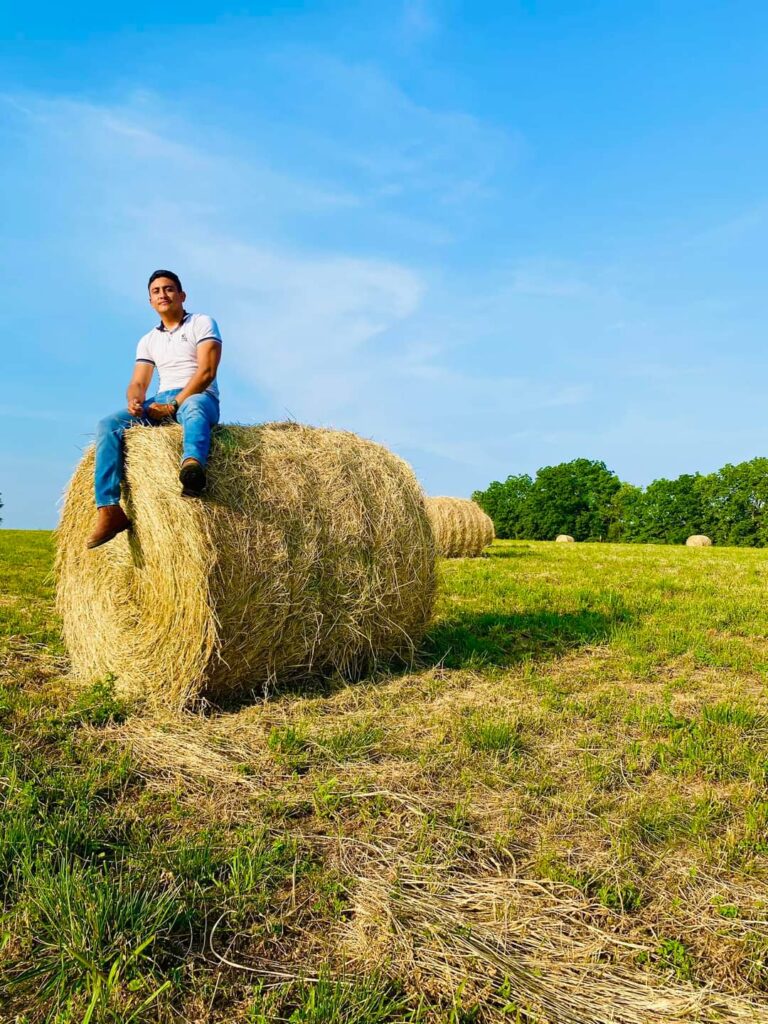
Here at Elmwood Stock Farm all of our livestock are kept on pasture and are 100% grass-fed with the addition of some added minerals and organic grains for our pigs and poultry. Many folks though are surprised to learn that we do feed hay and wonder how that fits in with our operation.
Though we do everything we can each year to extend our grazing season further and further out, the reality is that during the winter months our pastures go dormant and therefore can’t supply the necessary amount of grass for our livestock to feed. Our cattle and sheep are ruminants and need that constant supply of fibrous plant material to keep their digestive systems functioning well, even during the winter. That’s where hay comes in.
Hay is typically composed of grasses and/or legumes that are cut down from pastures, left to dry and then compacted into what are called bales. There are lots of different types of hay; common varieties include alfalfa, orchard grass, and timothy. We grow and bale our own blend here on the farm and ours is a mix of alfalfa, orchard grass, timothy, and fescue. We’ve found this mix to contain the right combination of protein and sugar to sustain our livestock throughout the winter.
But like so much in farming, it all starts with a seed. Many hundreds of thousands of them to be exact, spread out in our fields using what we affectionately call the “seed driller” and an industrial broadcaster. This is typically done anywhere from February to April or May depending on the weather we’ve been having and the condition of the pastures.
Once those pastures have been seeded they’re left to regenerate until the start of summer when it’s time to cut. Because we are a certified organic farm we don’t use any sprays or pesticides on our pastures so we will remove any weeds by hand with a hoe.

We use a hay baler to gather all the cuttings into large round bales and some square bales. The round bales are stacked and stored outside with a tarp to cover the tops of them to avoid excess moisture. Luckily our winters are somewhat mild so we don’t have to worry too much about hay spoilage. The smaller square bales we will typically store in hay lofts and feed to smaller groups of livestock as the need arises.
Many folks also ask us if we sell our hay but unfortunately we do not. Growing, cutting and baling hay, especially done with organic principles in mind, is quite a costly endeavor and we only account for enough hay for our own livestock through the winter.
Though it’s not quite the same as grazing on pasture, we aim for our hay to match the quality of pasture grass as closely as possible both for the health of our livestock as well as the quality of the meat.



Made with 
